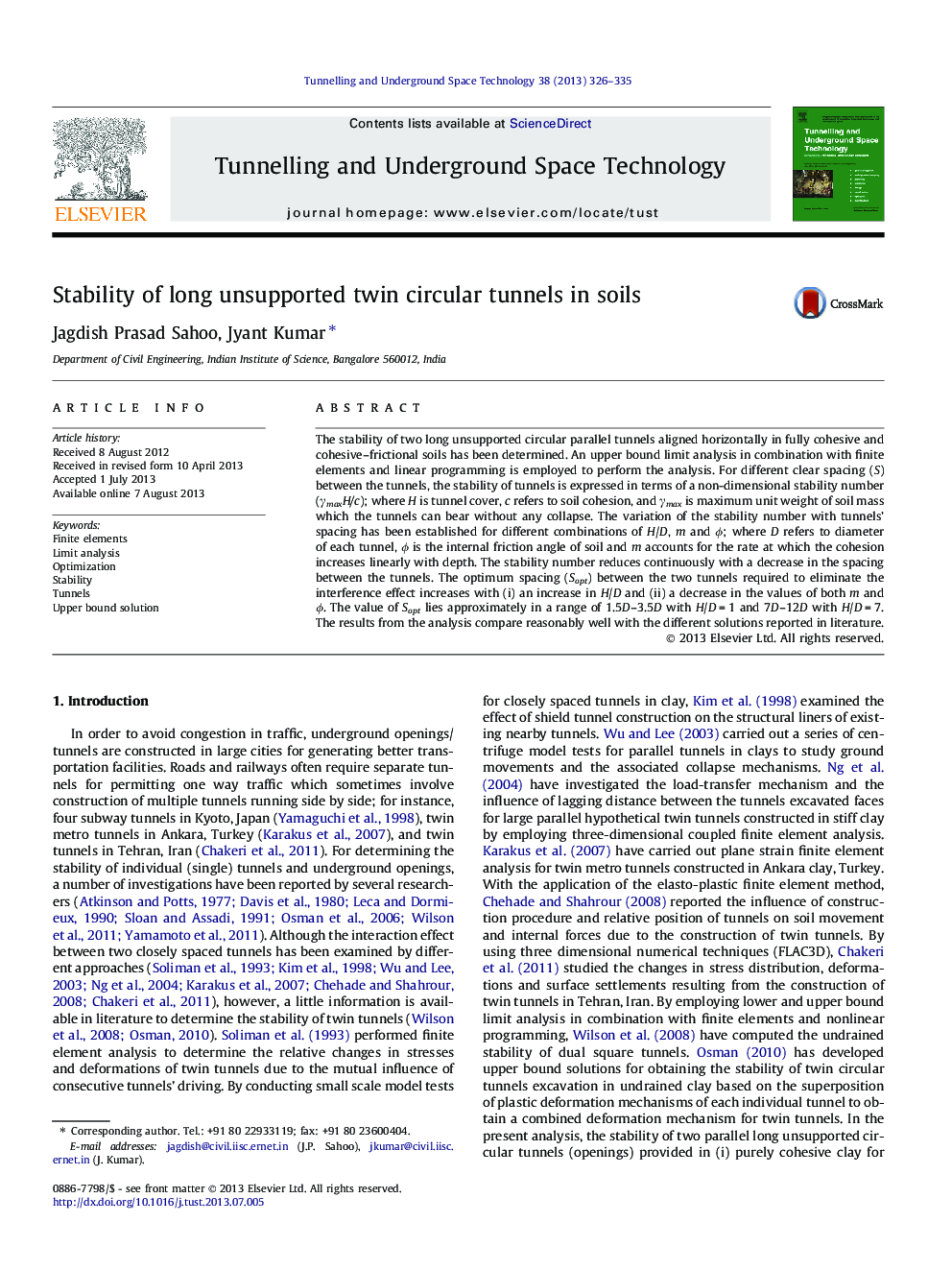| کد مقاله | کد نشریه | سال انتشار | مقاله انگلیسی | نسخه تمام متن |
|---|---|---|---|---|
| 310660 | 533341 | 2013 | 10 صفحه PDF | دانلود رایگان |

• Stability of twin unsupported tunnels examined.
• Upper bound finite element limit analysis performed.
• Purely cohesive and cohesive frictional soils considered.
• Stability numbers for design established.
• Failure patterns examined in detail.
The stability of two long unsupported circular parallel tunnels aligned horizontally in fully cohesive and cohesive–frictional soils has been determined. An upper bound limit analysis in combination with finite elements and linear programming is employed to perform the analysis. For different clear spacing (S) between the tunnels, the stability of tunnels is expressed in terms of a non-dimensional stability number (γmaxH/c); where H is tunnel cover, c refers to soil cohesion, and γmax is maximum unit weight of soil mass which the tunnels can bear without any collapse. The variation of the stability number with tunnels’ spacing has been established for different combinations of H/D, m and ϕ; where D refers to diameter of each tunnel, ϕ is the internal friction angle of soil and m accounts for the rate at which the cohesion increases linearly with depth. The stability number reduces continuously with a decrease in the spacing between the tunnels. The optimum spacing (Sopt) between the two tunnels required to eliminate the interference effect increases with (i) an increase in H/D and (ii) a decrease in the values of both m and ϕ. The value of Sopt lies approximately in a range of 1.5D–3.5D with H/D = 1 and 7D–12D with H/D = 7. The results from the analysis compare reasonably well with the different solutions reported in literature.
Journal: Tunnelling and Underground Space Technology - Volume 38, September 2013, Pages 326–335